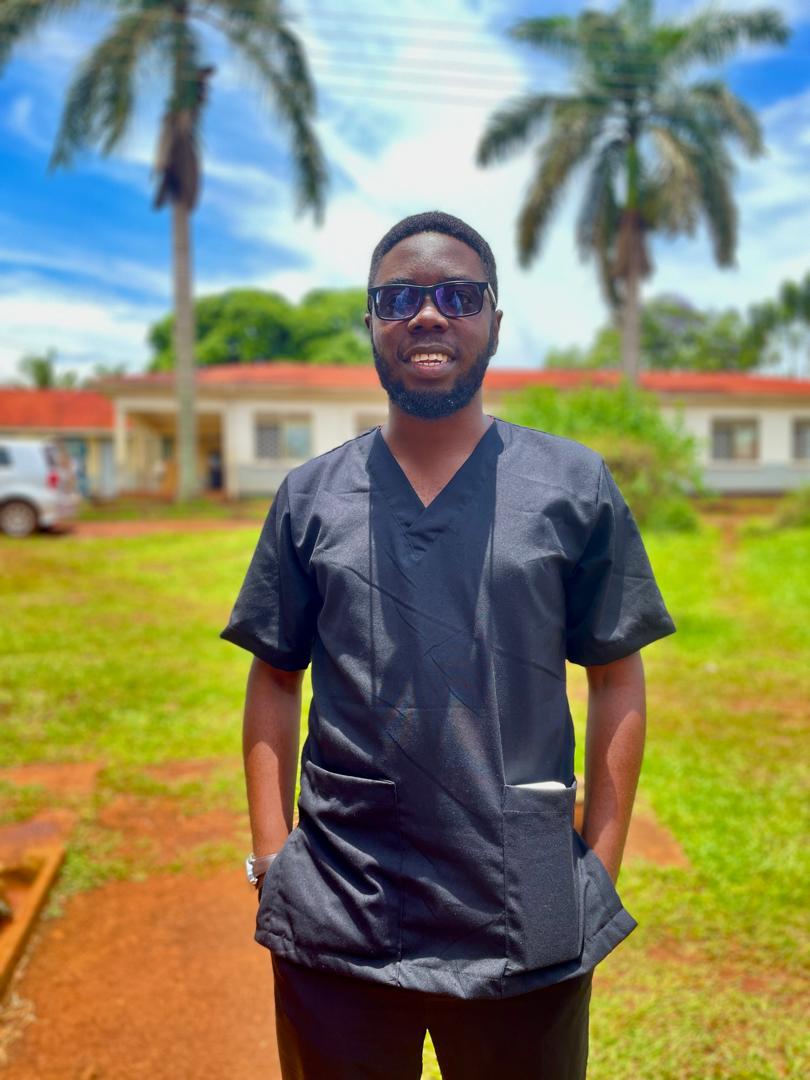MBAYO JONAH: How neglecting eye health in youth is a barrier to academic success
A study in South Africa revealed that nearly 2% of school-going children experience visual impairment, with 63% of cases attributed to refractive errors and 7% to amblyopia.

Ruth (not real names), a 13-year-old who received spectacles through the “Seeing Is Believing” East Africa Child Eye Health Program, shared her experience:
“I felt upset that I couldn’t do the simple things that other children could. My reading was so bad that I couldn’t make out simple letters.”
After receiving her spectacles, she said, “I feel like my prayers have been answered. I was feeling very angry with myself and depressed, but these glasses will help me do well, and finally, I can move forward in school. I won’t have to feel sad and upset anymore, and other kids won’t laugh at me.”
There are many children like Ruth who are left behind simply because they cannot access the eye health services they need.
A study in South Africa revealed that nearly 2% of school-going children experience visual impairment, with 63% of cases attributed to refractive errors and 7% to amblyopia. This issue is far from unique to South Africa; it’s a growing concern in Uganda, where many students face similar challenges without ever having received basic eye exams.
In a typical Ugandan classroom, you’ll often find students squinting at the blackboard, experiencing headaches when reading, or consistently asking to sit closer to the front. Sadly, most of these children have never had their eyes tested, and their struggles go unnoticed. Misconceptions in low-income countries often suggest that spectacles are meant for “rich kids.” While the wealthy may afford eye health services without financial constraints, does that mean children from poor backgrounds or rural areas are not prone to visual impairment? The stigma and myths associated with spectacle wear discourage children from getting the help they need. In many communities, glasses are stigmatized as a symbols of weakness or affluence , preventing children from seeking the treatment they need.
With this in mind, I want to add my voice to the 2024 World Sight Day theme, which emphasizes the importance of eye health in young people and aims to inspire children to love their eyes. Prioritizing eye health in schools is crucial because vision directly affects learning, social development, classroom engagement, confidence building, and overall quality of life both now and in the future. If you struggle to see, you struggle to learn.
Even mild visual impairment, such as simple myopia, can hinder peak performance in children who would otherwise excel academically or in sports. In severe cases, poor vision can lead to isolation and depression, as children struggle with activities like reading from the board or completing assignments on time. Consequently, this can contribute to school dropouts, reduced quality of education, and impaired skill acquisition.
Early intervention is key, especially for conditions like myopia and amblyopia, which can be managed effectively if addressed between the ages of 6 and 12. Unfortunately, many eye health initiatives in Uganda focus on older adults, neglecting the young people who need proper vision care to succeed in school and beyond. Many eye health camps in the country, organized by non-profit organizations and specialized hospitals, focus primarily on cataract surgeries and presbyopia conditions that mainly affect senior citizens leaving out the young who need proper vision for their development and future economic productivity.
To address this, schools, from elementary to tertiary levels, should become centers for free eye health camps. School administrators could work directly with eye health providers to implement routine eye examination systems, ideally twice a year, for screening and early detection of visual impairments. Parents collaborating with teachers and eye health providers to develop flexible ways to cover treatment costs could also significantly benefit children. Schools can also employ healthcare workers to conduct on-site health checks, ensuring accurate and timely diagnoses. This initiative should go hand in hand with sensitizing parents, teachers, and caregivers about the early symptoms of visual impairment so struggling students can be easily identified.
Moreover, the Ministry of Health, in collaboration with the Ministry of Education, should create policies mandating eye exams for all school-going children to ensure early detection and intervention.
Spending time outdoors also plays an essential role in reducing myopia. Studies indicate a 2% reduction in myopia for every hour spent outdoors. Encouraging children to spend more time outdoors during the day can help mitigate the risk of developing nearsightedness and alleviate symptoms of eye strain from prolonged screen use and near-vision activities like reading.
In summary, uncorrected vision impairment has a significant impact not just on individual lives, but on the global economy, resulting in an estimated annual productivity loss of $272 billion. This can be traced back to young individuals being restricted to jobs with minimal visual demands, reduced working pace, and an inability to reach their full potential at work. Picture a bank teller making a typo in a sum of money because they couldn’t clearly distinguish between a 9 and an 8.
By addressing eye health in schools, reducing the stigma around wearing glasses, and encouraging outdoor activities, we can ensure that every child has the chance to succeed. Improving access to eye care is not just about health; it’s about securing a brighter, more productive future for the next generation. Together, we can improve eye health for young people through increased access, early detection of preventable visual impairment, reinforcement of outdoor activities, and reduction of the stigma around wearing glasses helping every child reach their full potential for a brighter future.
The writer, Mbayo Arnold Jonah is an ophthalmic clinical officer



